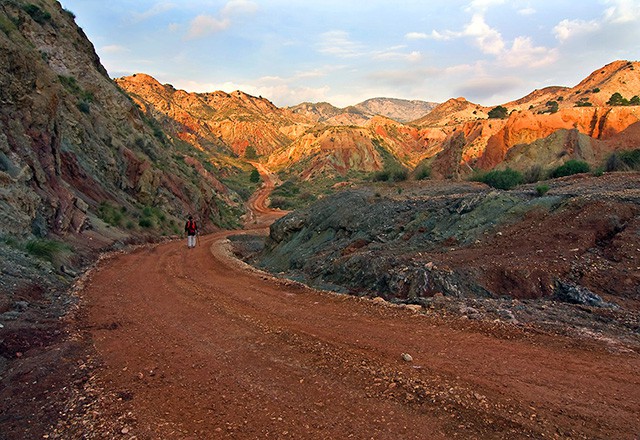Features
-
 8 Km
8 Km
-
 Medium difficulty
Medium difficulty
Description of the route
The walk starts at the information panel in the Barranc de la Font park and continues in the direction of the municipal sports’ centre (post 1) and continues along the calle Font de Moratell (Moratell Spring Street) until we come to the spring itself with its old watering trough where we can refresh ourselves. The road continues between houses in the country leaving the town behind, and enjoying a panoramic view over the coastline. At the point where the road changes from asphalt to a dirt track we each the Bernat’s Spring House (post 2). We continue on to the right along a track which is in a bad state, passing the path to the Mascuna Spring (post 3) on the right and we reach a small hill where the path forks(post 4). From here you can see the les Salines Ravine in the distance. We descend to the right following the de la Mola Ravine until we reach the descent to into the les Salines Ravine (post 5) and a surprising landscape with a wide and complex variation in colour. We cross it to go up the other side (post 6) along a path which goes up the slopes of Sílm, between abandoned terraces until we reach a high point from which we can see the Montnegre River valley and the houses of Montnegre de Dalt, an agricultural hamlet which is part of the Jijona municipality, where they still cultivate high quality vegetables for sale in the local markets. The descent follows a fence and passes close to a house on the right, until it reaches an asphalted road and the PR-CV 142 (post 7) which we follow to the Montnegre hermitage (which has an information post) and the old school (post 8 and an information panel).
Information of interest
Flora and fauna
The vegetation of this area is very homogenous, consisting mainly of Aleppo pine woods, which, although they are the products of re-forestation initiatives, are now very naturalised. You also find small holly oak woods and scattered stands of Valencian oak. The bushes around the pine woods are those naturally heat-loving Mediterranean species such as kermes oak, juniper, prickly juniper, Phoenician juniper, pistacia lentiscus, European fan palm and genista cinerea.
The plant species of the region are those typically found in places where the line of Holm oak recedes and are comprised of plants of the leguminous, cistacae and aromatic labitiatae families such as gorse, heather, thyme, sage, ironwort , white rock rose, rosemary, cistus clusii and Montpellier cistus. We can also find species such as wild asparagus, asphodel and pampass grass. In more shady spots we can find vines such as rough bindweed, common wild madder, honeysuckle, brambles, fragrant virgin’s bower (clematis flammula), along with ivy.
As far as fauna is concerned, we note the presence of mammals such as foxes, badgers, the common genet, boars, rabbits, and less frequently, the hare.
Concerning reptiles and amphibians, we can mention the presence of the common toad, Natterjack toads, the Large Psammodromus lizard, the Spanish Psammodromus lizard and the Ocellated lizard. Amongst the snakes we can find the Montpellier snake, the horseshoe whip snake and the Lataste’s viper.
The bird species are those generally found in pine woods, with examples such as the Common Wood Pigeon, the Turtle Dove, the European Green Woodpecker, the Spotted Flycatcher, the Long-tailed Tit, the Coal Tit, the European Crested Tit, the Eurasian Wryneck, the Short-toed Treecreeper, the Common Nightingale, or the Eurasian Tree Sparrow. The Eurasian Sparrow Hawk, the Tawny Owl, the Eurasian Scops Owl, and the Eurasian Eagle Owl are species which can also be found in the area, and which may even nest here in some cases. In the more open spaces in the pine woods we can find species such as the Common Kestrel, the Crested Lark, the Woodchat Shrike, the Blackeared Wheatear, the African Stonechat and the European Bee-eater.
In terms of landscape, the area is of great local interest, as the lower reaches of the Montnegre river basin to the coast constitute an extensive patch of green in an otherwise arid area, as is the countryside in the lower part of the Jijona municipality. In addition, the panoramic views from the high parts of the region are of great interest, as you can see most of the mountains in the north of Alicante, such as Aitana, Puig Campana, Serrella and Menejador.











